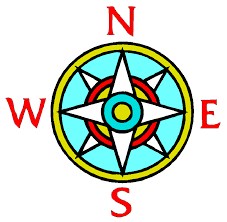Teaching the Concepts of Geography
 Geography is one of the most important topics discussed and explored in Social Studies. In order to teach geography lessons effectively, teachers must know the concepts of geography and explore through some great online tools that they can use for their classrooms.
Geography is one of the most important topics discussed and explored in Social Studies. In order to teach geography lessons effectively, teachers must know the concepts of geography and explore through some great online tools that they can use for their classrooms.
Geography is defined as the study of places and the relationships between the environment and the people. There are 2 main types of Geography: Physical and Human Geography.
Physical Geography is the study of the physical aspects of the Earth including soil, streams, and mountains. It also is the study of the Earth's climate, seasons, and atmosphere.
Human Geography is the study of the different people and culture on the Earth's surface.
There are 5 Themes of Geography that teachers need to keep in mind when developing their lessons:
1. Location: Students will need to learn the location of places. A location can either be Absolute or Relative. A location is absolute, or specific, when it is the coordinates of a map (longitude and latitude). A location is relative when it is nearby or down the road.
2. Place: it is defined as an area with features that distinguish them from other places. For example, a school is a place because it includes classrooms, a gym, hallways, books, students, etc.
3. Region: it is defined as an area defined by similar characteristics (physical, natural, human, or cultural).
4. Movement: it is the way that information, ideas, and people move from one place to another.
5. Human- Environmental Interaction: Students look at the relationships between the people and the environment. The students explore how people depend, adapt, and/or modify the environment. The students learn how this has both positive and negative effects.
 There are 6 Essential Elements of Geography that teachers use for students to gain a better understanding of geography.
There are 6 Essential Elements of Geography that teachers use for students to gain a better understanding of geography.
1. The World in Spatial Terms
Students will learn how to use maps and other geographical tools and representations to organize information about people, places, and environments.
2. Places and Regions
Students will create regions to interpret the earth's complexity. The students will also learn how culture and experiences influences the people's perceptions of the places and regions.
3. Physical Systems
Students will shape the patterns and characteristics of the earth's surface.
4. Human Systems
Students will learn about the cooperation and conflict of the people's influence of the earth's surface as well as the characteristics and migration of the human populations.
5. Environment and Society
Students will learn about how the physical systems affect humans and how humans modify the physical environment. Students will also learn about the importance of resources.
6. The Uses of Geography
Students will learn how to apply geography to the past, present, and plan for the future.
 Teachers can use the National Geographic website for resources and activity ideas for teaching geography in the classroom. This website is up to date with recent geographical news as well as lessons and activities. It also has an interactive Globe and Map systems for students to practice using and build their skills on.
Teachers can use the National Geographic website for resources and activity ideas for teaching geography in the classroom. This website is up to date with recent geographical news as well as lessons and activities. It also has an interactive Globe and Map systems for students to practice using and build their skills on.
These are some great resources and tools to use when creating effective geographical lessons for your classrooms. The real challenge is learning how to incorporate these geographical themes and elements into your lessons. It is important that each theme and element is taught throughout geography lessons in order for students to develop and build on their geographical skills.
 Geography is one of the most important topics discussed and explored in Social Studies. In order to teach geography lessons effectively, teachers must know the concepts of geography and explore through some great online tools that they can use for their classrooms.
Geography is one of the most important topics discussed and explored in Social Studies. In order to teach geography lessons effectively, teachers must know the concepts of geography and explore through some great online tools that they can use for their classrooms.  Teachers can use the National Geographic website for resources and activity ideas for teaching geography in the classroom. This website is up to date with recent geographical news as well as lessons and activities. It also has an interactive Globe and Map systems for students to practice using and build their skills on.
Teachers can use the National Geographic website for resources and activity ideas for teaching geography in the classroom. This website is up to date with recent geographical news as well as lessons and activities. It also has an interactive Globe and Map systems for students to practice using and build their skills on.
This is a very helpful way to identify the sorts of ways we as future educators can teach economics. I am going to save this in my Google Drive!
ReplyDelete